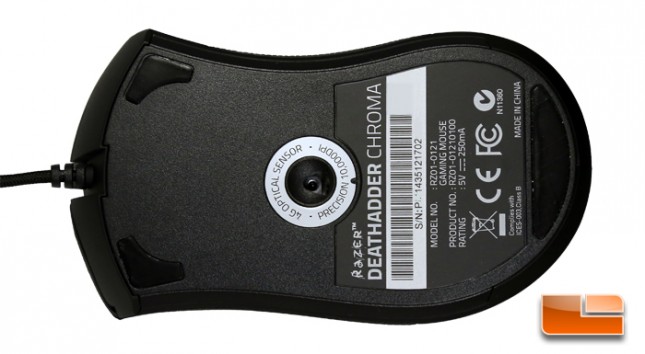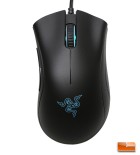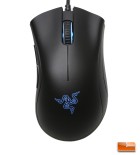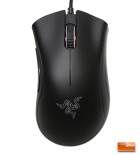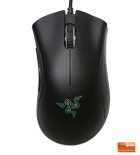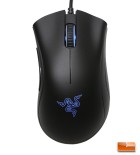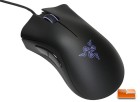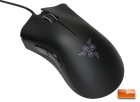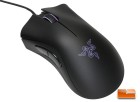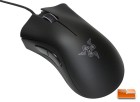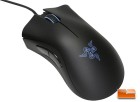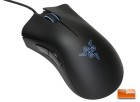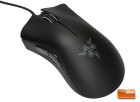Razer DeathAdder Chroma Gaming Mouse Review
Looking around the Razer DeathAdder Chroma
The Razer DeathAdder Chroma has typical gaming mice dimensions of 5(L) x 2.76(W) x 1.73(H) in / 127x70x44 mm. It is constructed with textured hard plastic with rubber grips on the sides and a textured rubber gripped scroll wheel. There are two light zones on this mouse, the Razer logo and the scroll wheel, which can be assigned the same or independent settings in the Synapse control software.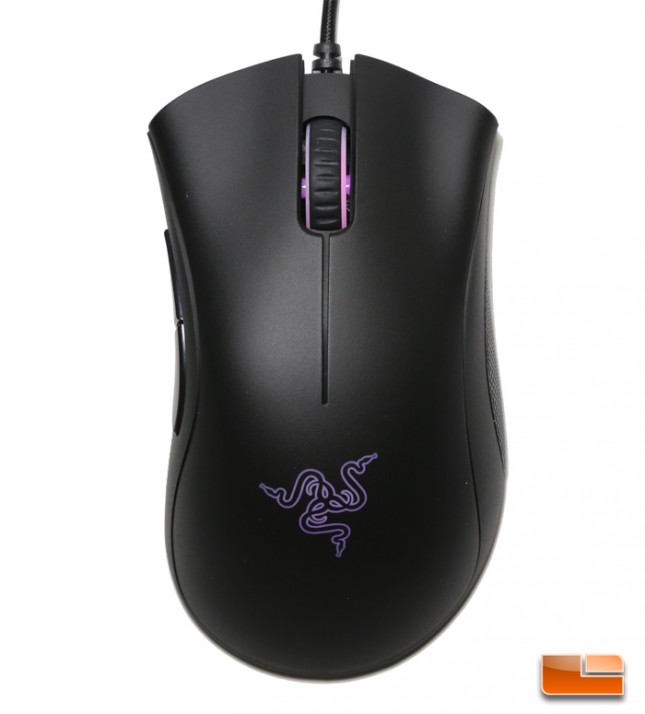
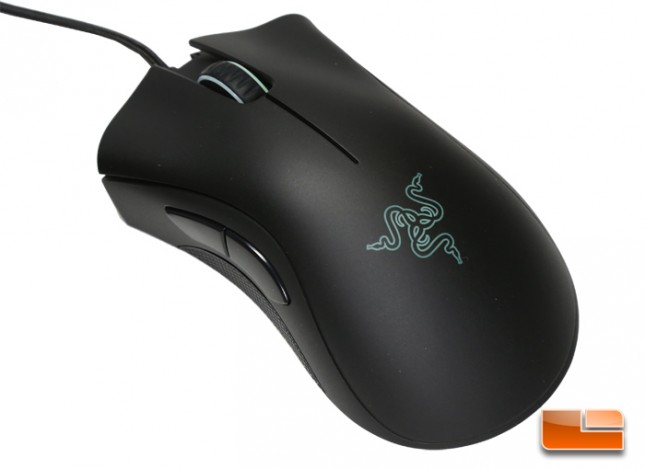
The 7 foot long braided USB cable ends with a gold plated USB plug.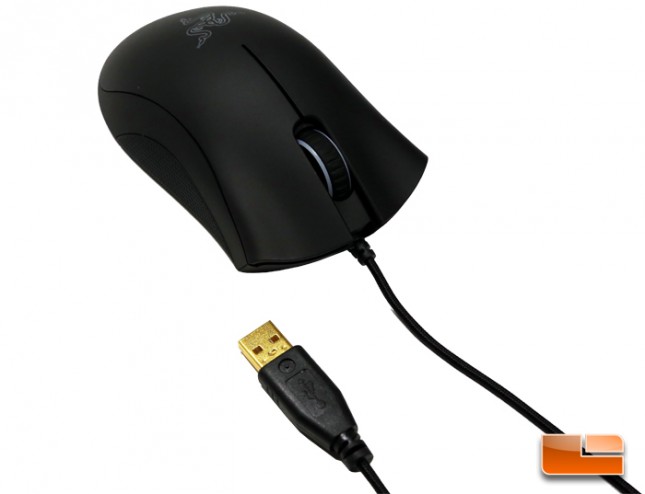
The W-shaped concave of the front of the mouse that directs the placement of the fingers gives way to a slanted dome that supports the resting palm. 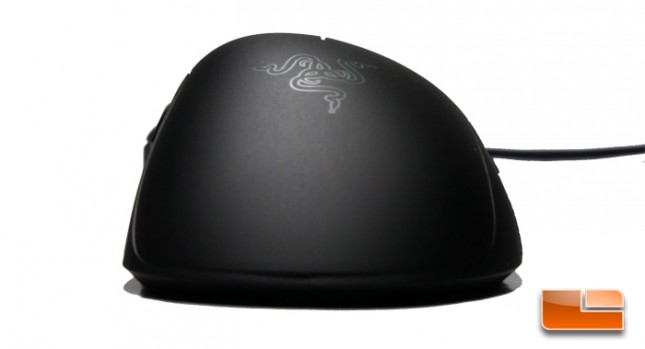
The Razer DeathAdder has always been regarded as both a claw and palm grip mouse depending on how the hand is positioned. A broad arc provides ample support for the palm as it curls naturally onto the mouse. Closer to the rear end of the mouse, the curvature as seen from the side is straighter and can support the wrist to direct the hand into a claw.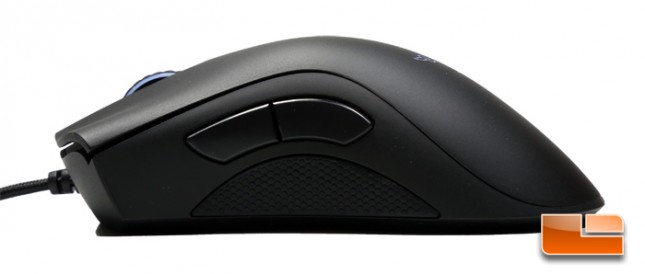
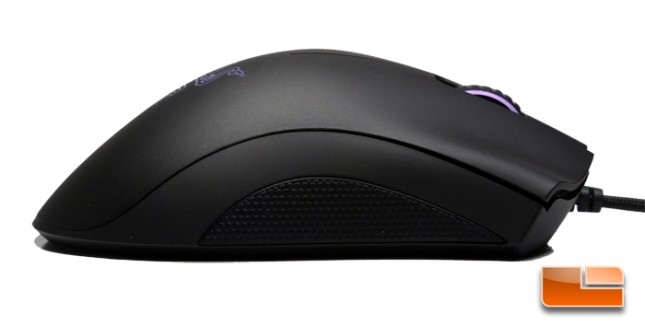
There are two large hard plastic thumb buttons placed on the left side of the mouse. These buttons have similar actuation and tactility to that of the main buttons.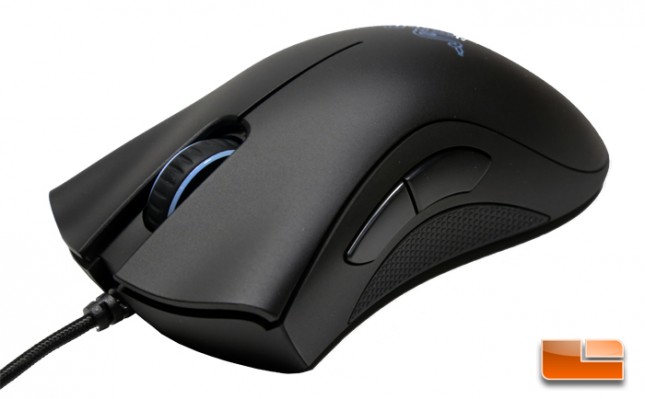
Under the mouse are three low-friction slick feet and the 4G IR optical sensor. Though the DeathAdder Chroma has specifications of 10,000 dpi, the sensor used is an Avago 3988 which has a specified tracking resolution of 6400 dpi.
Update 11/13/2014 at 11PM CT:Razer has clarified to us that the tracking sensor in the DeathAdder Chroma is the Avago 3989 which tracks natively at 10,000 DPI and not the stated older Avago 3988 which tracks natively at 6400 DPI. Initial launch units had the Avago 3989 sensor package stamped with 3988 markings before a newer sensor package with 3989 markings was phased into production. Regardless of revision, all DeathAdder Chroma mice track 10,000 DPI natively without any software interpolation.
